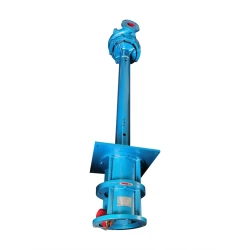Types of Sump Pumps
2024-06-15
A sump pump is a device used to remove accumulated water from a sump basin, commonly found in the basements of homes. These pumps are essential for preventing basement flooding and keeping the area dry.
Types of Sump Pumps
1. Submersible Sump Pumps
- These pumps are installed underwater in the sump basin. They are known for being quiet and efficient.
- Pros: Quieter operation, better for larger volumes of water.
- Cons: Harder to access for maintenance, generally more expensive.
2. Pedestal Sump Pumps
- These pumps have a motor mounted above the sump basin, making them easier to access for maintenance.
- Pros: Easier maintenance, generally less expensive.
- Cons: Louder operation, less efficient in handling large volumes of water.
Key Features to Consider
1. Horsepower (HP)
- Determines the power of the pump. Common ratings are 1/3 HP, 1/2 HP, and 3/4 HP.
- Higher HP pumps can move more water and handle larger volumes but may be unnecessary for smaller basements.
2. Switch Type
- Float Switch: Automatically turns the pump on and off based on the water level.
- Diaphragm Switch: Activates based on water pressure.
- Electronic Switch: Uses sensors to detect water levels.
3. Material
- Pumps are typically made of cast iron, stainless steel, or thermoplastic.
- Cast iron and stainless steel are more durable but more expensive.
- Thermoplastic is less expensive but also less durable.
4. Battery Backup
- A crucial feature for preventing flooding during power outages. Some sump pumps come with built-in battery backups or can be paired with a separate backup system.
5. Pump Capacity
- Measured in gallons per hour (GPH). This determines how quickly the pump can remove water.
- It’s essential to choose a pump that can handle the expected volume of water efficiently.
Top Sump Pump Brands
1. Zoeller
- Known for durability and reliability, Zoeller pumps are a popular choice for both residential and commercial applications.
- Example: Zoeller M53 Mighty-Mate.
2. Wayne
- Offers a range of pumps with advanced features like battery backups and high capacity.
- Example: Wayne CDU980E.
3. Liberty Pumps
- Known for their quality construction and long lifespan.
- Example: Liberty Pumps 257.
4. Basement Watchdog
- Specializes in battery backup systems, making them a great choice for areas prone to power outages.
- Example: Basement Watchdog BW4000.
Installation and Maintenance Tips
1. Proper Installation
- Ensure the sump basin is properly sized and installed.
- Use a check valve to prevent water from flowing back into the basin.
- Test the pump after installation to ensure it works correctly.
2. Regular Maintenance
- Clean the pump and basin regularly to prevent clogs.
- Check the operation of the float switch and other components.
- Test the battery backup system periodically.
3. Professional Help
- While some homeowners may install their sump pump, professional installation can ensure proper setup and functionality.
Conclusion
A sump pump is a vital component for maintaining a dry and safe basement. By selecting the right type and model, ensuring proper installation, and performing regular maintenance, homeowners can protect their properties from water damage and flooding.



